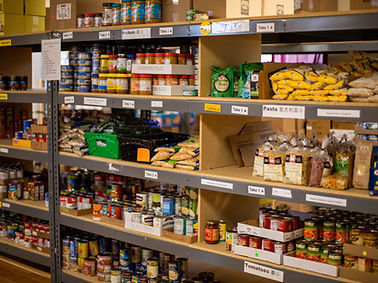
Creating Food Security Options on Campuses
The research offers several suggestions on how to create food security on campuses. Each campus works differently and some of these suggestions are perfect for your campus and other options simply will not work. Below are some steps higher education programs can take to help decrease food insecurity across campus.
I strongly suggest that you find ways to encourage all levels of your campus to become involved in these efforts. Consider ways for your faculty, staff, and students to all become engaged and motivated to increase food security on your campus!

01
Establish a food pantry
Creating a food pantry on campus is a quick, easy, and relatively inexpensive project. Some important things to consider are to select a location on campus that provides visibility to students and staff, advertise the hours and services offered, and how you will receive donations to the pantry. Establishing a partnership with your local food bank helps to guarantee a steady flow of food into your pantry. Every county in the United States is supported by a food bank. If you don't know who your local food bank is, you can look it up here.

02
Food literacy programs
Food literacy programs could entail several different things.
-
Nutrition interventions in dining services
-
Educational programming about nutrition
-
Basic knife skills, access to and skills on how to use appliances
-
Cooking classes to help teach basic nutrition concepts and cooking skills



03
Creative food sharing programs that fit your campus population
Food sharing programs can mirror the popular concept of "pay it forward". There are several ways that food sharing might look.
-
Meal sharing options
-
Voucher programs
-
Cash assistance for emergency expenses
-
Food scholarships
-
Campus gardens

04
Social workers on campus
A campus can benefit from hiring social workers to help students navigate the challenging process of finding and applying for benefits. Furthermore, social workers can improve and coordinate campus and community-based services so that students can receive earlier interventions and reduce waiting times.

